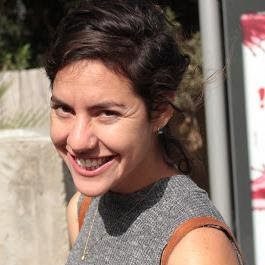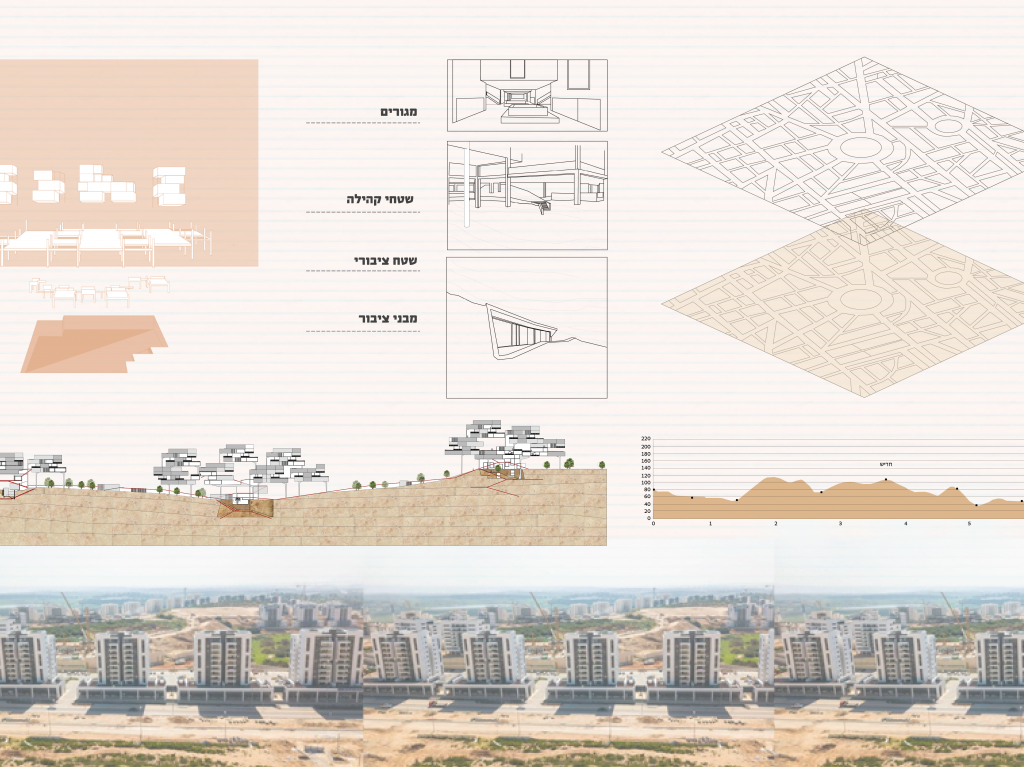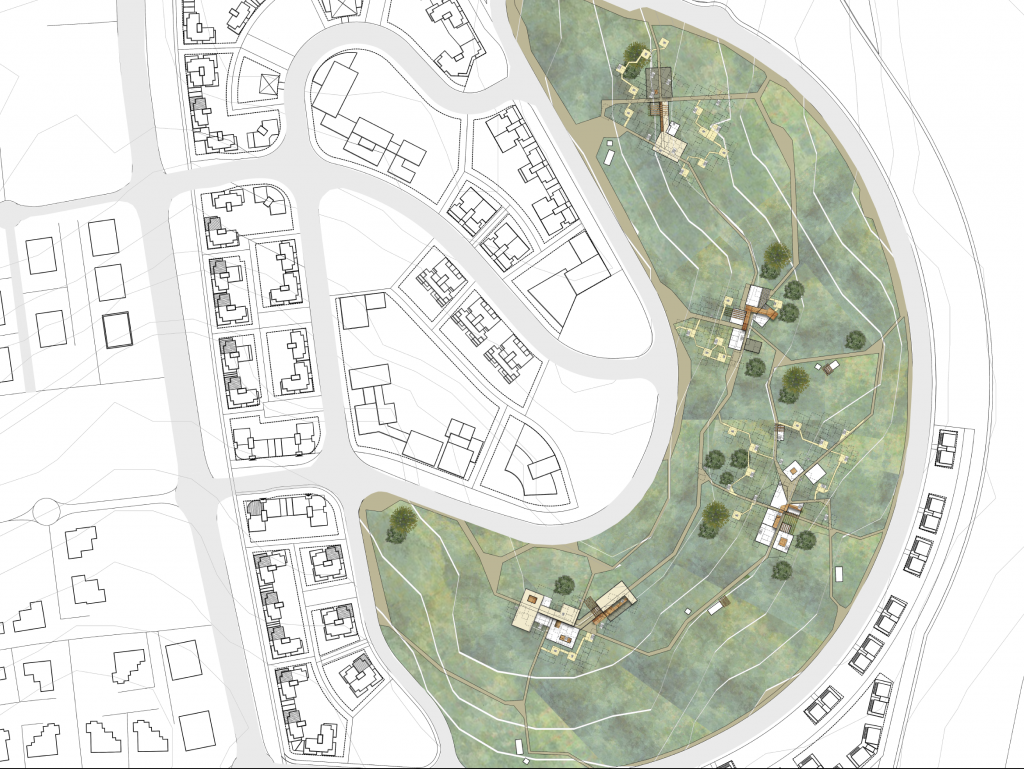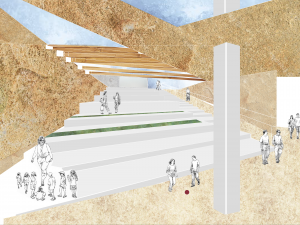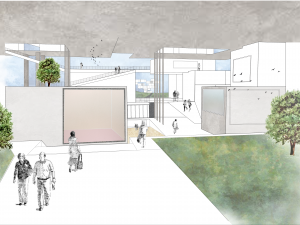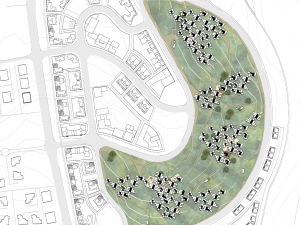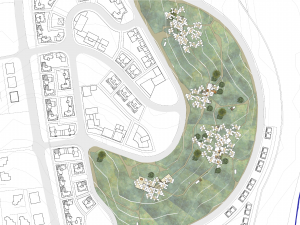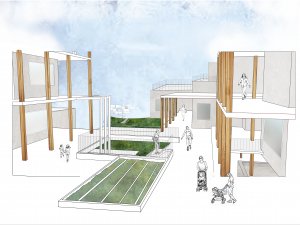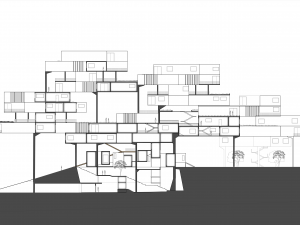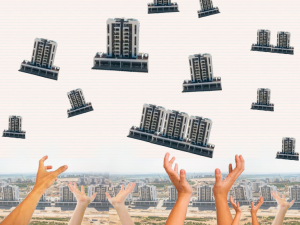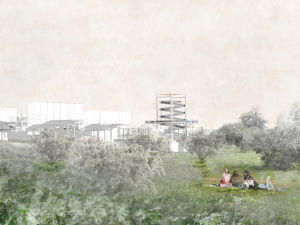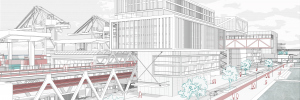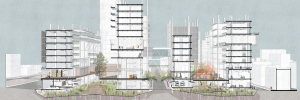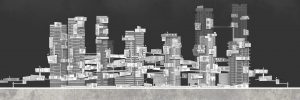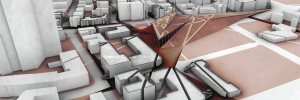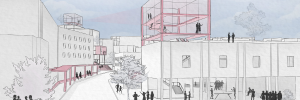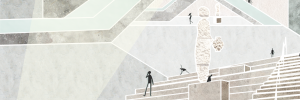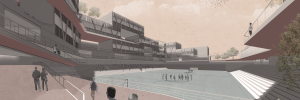Bottom Up, Top Down
Throughout history the arrangement of public areas in a city has permitted the flow of materials, air and people, creating a meeting place and community expression and making possible its development. These areas are of great importance in determining the character of the city and how it should be planned, especially in the building of new cities. In present methods of planning the public areas are not at the heart of the plans but become residual spaces. The increasing uniformity of the new areas planned creates homogenous areas that do not feed into the life systems being built around them. The answer to this problem requires reassessment of two factors: land and community, and their establishment as the seed for the new urban development.
The planning strategy is based on a return to basics: the planning of an independent public unit serving as the base for the existence of the urban system, feeding it and making possible the connection to other public units within the area. The basic system creates renewed division and definition of the urban area capsules, forming new multilayered area cells existing above and below the surface. Connecting to the basic system are repetitive units serving for the establishment of the web of residential areas and creation of connections between the various parts of the system.
This system constitutes a basis for the creation of communities revolving around particular issues and physical spaces, and able to function as an active and heterogeneous community system that becomes the backbone of the city.
The proposed plan focuses on the neighborhood “B’Tzafta” in Harish as a case study. The project proposes a shift from failing cities to thriving cities, permitting gradual municipal development with a center and margins, based on the repeated use of modules of high diversity. This accords with the laws of nature, where we find that the richer the inter-relationship in the web of life, the greater the system’s stability and long-term survivability – and for cities, this means providing a rich, sustainable and more diverse civic environment.


